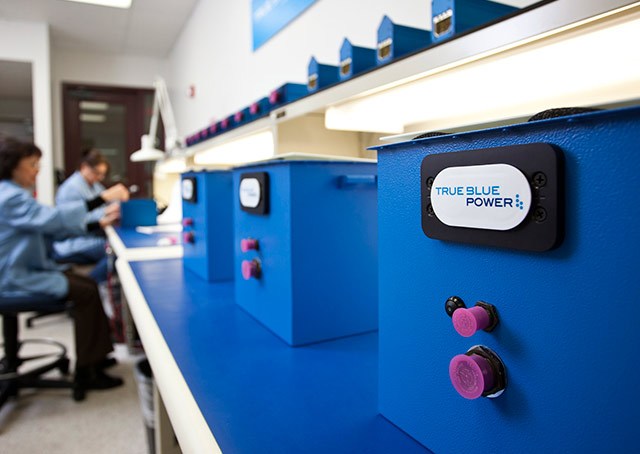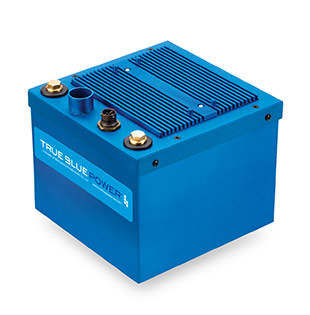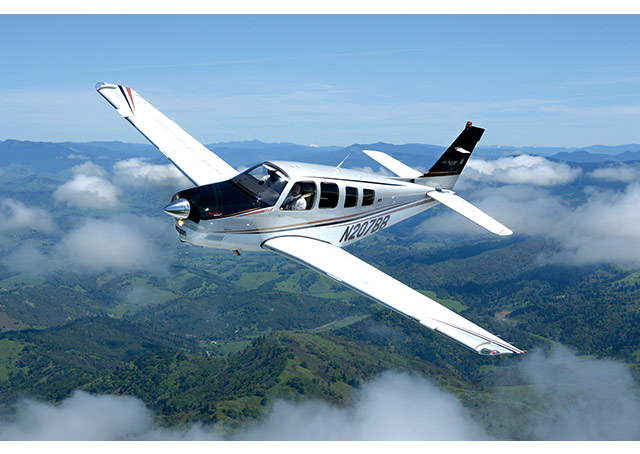
The long-discussed benefits of lithium-ion batteries moved one step closer to use in light general aviation aircraft in mid-November when Transport Canada Civil Aviation approved the installation of the True Blue Power battery for use in the Beechcraft A36 Bonanza. The STC opens the door to FAA certification of the new-technology battery for use in a wide array of GA airplanes, according to officials at True Blue, which is a division of Mid-Continent Instruments and Avionics.
The 17-amp-hour battery weighs just 16 pounds, about 45 percent less than the conventional lead-acid and nickel-cadmium batteries used in most GA airplanes. And while weight savings is often seen as the most significant advantage of lithium-ion batteries, True Blue says safety is also an important factor.
The Nanophosphate lithium-ion chemistry in True Blue batteries is “more chemically stable and does not produce high levels of heat or oxygen, even in the rare event of battery over-temperature or over-voltage,” according to Rick Slater, True Blue Power division manager. “In addition to advanced chemistry, the TB17 is engineered with several layers of protection. It’s a smart pack,” Slater continued. “Safety is addressed at multiple levels including chemistry, cell design, containment, and the integration of sophisticated electronic protection systems.”
And while lithium-ion batteries came under scrutiny when the Boeing 787 began having electrical problems, officials say the problems had nothing to do with the batteries themselves, but instead on how they were utilized on the airplanes.

In addition to safety and lighter weight, the new technology batteries deliver greater performance as well. “The TB17 requires less maintenance and delivers cooler engine starts, faster recharge rates, and better high-temperature and cold weather performance when compared to lead-acid batteries. This results in a considerable cost savings for the operator, specifically when amortized over the extended service life of the battery,” according to Slater.
Meanwhile, also in November, R1 Airlines, based in Calgary, Alberta, Canada, became the first commercial operator to utilize an aircraft equipped with True Blue lithium-ion main aircraft batteries in revenue service. The on-demand charter service installed the battery on a Bombardier Dash 8-100 aircraft after the battery manufacturer and the airline’s parent company received a Part 25 STC from Transport Canada for installation of the TB44 lithium-ion battery on Bombardier DHC-8 100/200/300 series aircraft. The companies have applied for FAA bilateral acceptance of the same STC for use on U.S.-based aircraft.



